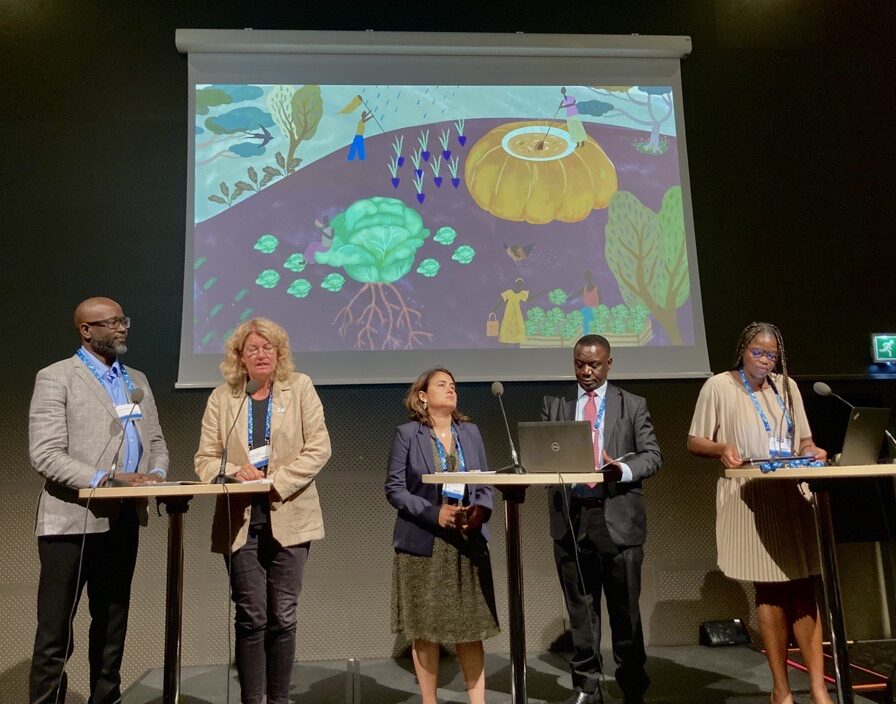By Xuefei Chen Axelsson
Stockholm, Aug. 21(CED) — With rapidly changing climate, the rainfall pattern is greatly disturbed and increasingly unpredictable. The argument to invest in rain-fed agriculture is not an option but a step that must be taken to stop the outflow of billions of dollars spent on food imports. 60% of the world’s cultivable but unused land lies in Sub Saharan Africa.
What is green water and how are African farmers using it?
Green water is rainwater that falls directly on the ground, infiltrates into soil and eventually sucked up by roots. The value of green water is undermined, as one can’t build massive infrastructure to pull it out from the ground or build a dam to divert its flow for irrigation. It’s been three decades since Prof. Malin Falkenmark first developed the concept of green water.
But it seems to me for the first time that people realised the importance of the infrastructure such as roads, dams and reservoirs. Africa is rich in sunlight and in water. But due to lack of infrastructure, the water cannot be stored. Therefore, when it is too dry, the pests can be a lot too. If people can build more rivers, lakes, canals and reservoirs, more water will be stored and used for agriculture. Of course, at the same time if the scientific way of using water is applied, Africa will see great harvest. Examples are ready in Zambia. Scientifically using the remote sensor to test how much water is needed and how often the crops need to be watered according to the crop type and the soil situation, these are the ways to improve African agriculture.
African farmers value this water like none other, as 80% of all small-holder farming activity relies on rainwater to maintain soil moisture.
Established techniques have made it possible to hold greenwater longer in soil, available round the clock to plant roots even during dry spells. Rainwater otherwise can either easily flush away the topsoil, causing of soil, nutrients, and water.

The opportunity that investors are sitting on
Every dollar that is invested in enhanced practices for rain-fed agriculture gives six times more return, according to a preliminary study led by SIWI. A relatively small investment such as 100 USD per year per hectare can lead to a doubling of yields and reduced risk of crops withering during dry spells.
SIWI has identified gaps through the Transforming Investments in African Rainfed Agriculture (TIARA) project. There is a general lack of empirical data to determine the exact socio-economic and environmental benefits of enhanced rain-fed agriculture.
The data are needed for contracts between farmers and investors. There is a need to effectively package and present these impacts to attract investors, whether they are public or private.
TIARA is working on the ground in Malawi, Zimbabwe and Zambia to collect such empirical data, and the preliminary findings were presented in Botswana from 8-9 August, at a specially designed investment forum for rainfed agriculture, convened by the Zambezi Watercourse Commission (ZAMCOM). The Forum attracted over 80 participants from financiers and private investors to government officials of ministries in the eight member countries of the Zambezi Water Course.
How does this secure Africa’s future?
By 2025, Sub-Saharan Africa countries will be importing food to the value of 110 billion USD every year. What is worth noting, is that much of this money is not owned by Africa but reaches the region through foreign aid. I am concerned that the inflow of foreign aid is likely to be significantly cut down over the coming years making this an unsustainable expenditure.
Every dollar that is spent on importing food, could have been used to create jobs and food security within the continent. Currently, food imports directly impact the livelihoods of 2.17 million people, as food could be cultivated, processed and marketed locally instead of being imported.
95% of staple food production in Africa relies on rainfed agriculture, which receives only 5% of public agricultural money. We are looking in the wrong direction. The resources lie within Africa. 60% of the world’s unused agricultural land is in Sub-Saharan Africa.
In other words, if investments in rain-fed agriculture are boosted, the potential for job creation is so immense, that productivity could increase to a point where it will be no longer necessary to import primary foods into Africa.
Let Africa be its own food storehouse. Please invest in Africa.


